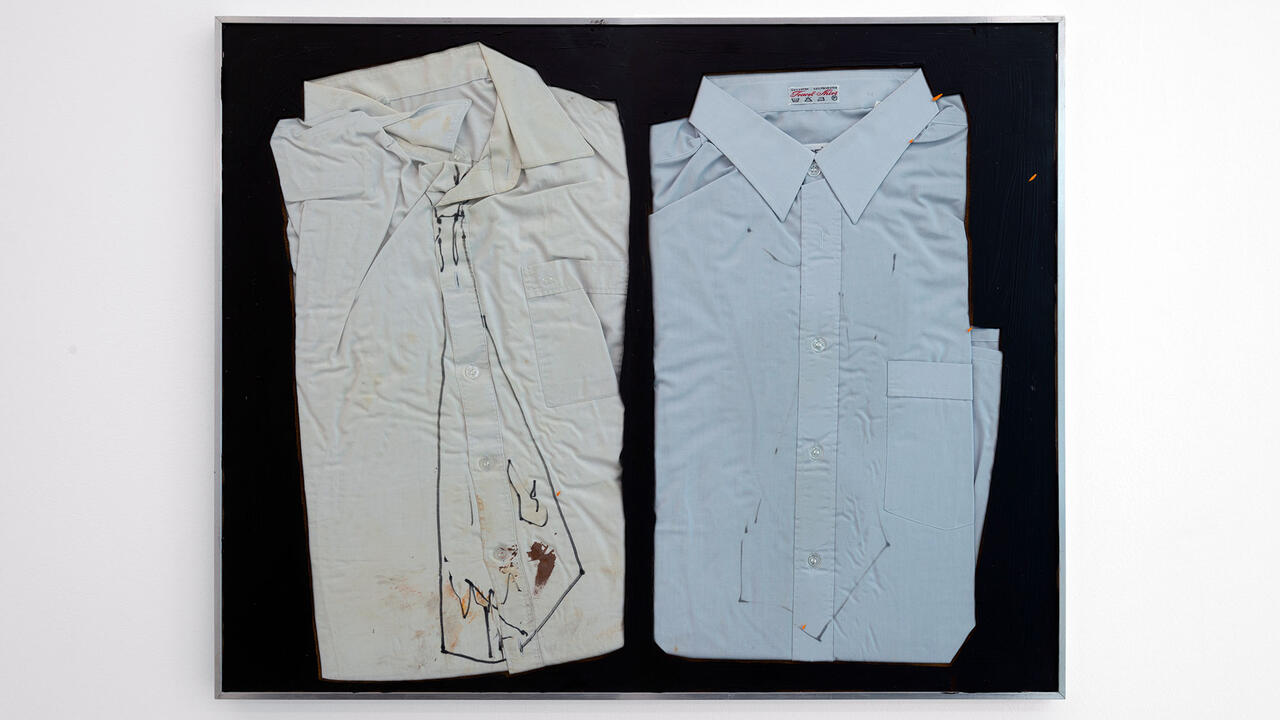Cady Noland
Has the media become a theatre and court of law where fame and opprobrium are rehearsed like a narrative scripted by public opinion - a modern cautionary tale? This is the question posed by Cady Noland's show which pays witness to the downward spiral of the public icon. The artist explores her relationship with fame, complicated by the fact that notoriety is ascribed to people for different reasons and in different ways - in this case for their failures or evil doings. Her entire cast of characters have been thwarted, in life or in death, by the repercussions of fame, burnt out 'victims' such as White House aide Vincent Foster, made famous posthumously through his literal political suicide; Betty Ford, martyr and ex-First Lady turned rehab matron; and Peter Holm, the disenfranchised ex-husband of Joan Collins - all celebrities through affiliation or disgrace.
Tidy enclaves or clusters of images and isolated captions, culled from print media and silkscreened onto individual sheets of aluminium in various dimensions, lean ominously, and seemingly haphazardly, against the gallery walls. These rough-hewn images encircle the centrepiece of the show, three lustrous aluminium-plated wooden stockades and benches, visual tropes for the media's public display of shame, abjection and humiliation. The 'laughing stocks' that society holds up for scrutiny here are forcibly and publicly disciplined like slaves under the menacing whip of an unrelenting dominatrix.
As the sculptural counterpart to the stockades, freestanding swings have been anchored to the gallery's floor. Armoured in aluminium with white tyres suspended by heavy-duty chains, these ghostly playgrounds echo the visual as well as physical power relations inscribed in the figure of the stockade. They also refer back to the free-standing silkscreened aluminium plate, entitled Trashing Folgers (1993/4), which eerily depicts the 'trashed' backyard of Sharon Tate's residence. In the image we see the house where Tate and others were murdered, detritus on the ground, as well as a lonely tyre swing (Tate was eight months pregnant at the time of her murder). A hole is cut out of the aluminium sheet where the swing's seat is screened, creating just enough room for an arm to fit through, much like the wooden stockade that Noland has positioned opposite. Charles Manson, although not pictured, becomes the uncanny spectre of Noland's gallery of publicly chastised ex-husbands, former First Ladies, convicts, politicos and other losers. Manson was bestowed with celebrity as the executioner of the rich and famous, eclipsing his movie star victim.
Noland reminds us that as the brokers of a multitude of rights and wrongs, the media is now able to point a scrupulous finger at that politician, movie star or celebrity who has transgressed our tacitly defined and protected rules of moral conduct, or rather, a collective fantasy of what they should be. Anyone can be made into a hero or villain because minor celebrity is just another disposable object of mass consumption.














